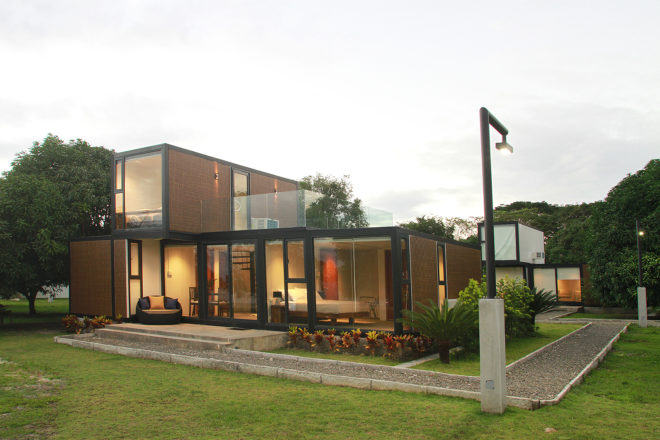
Tucked away in a mangrove and an orchard of over 300 mango trees in the resort community of Laiya, Batangas, is a fashionably secluded resort.
There is neither a conventional beach front where beachcombers mill around nor cable TV in the rooms. Guests who want to swim or snorkel take a boat ride to the marine sanctuary.
Yet despite its low-key soft opening, Cala Laiya has been getting bookings, thanks to favorable reviews from guests.
Cave
“Cala” is the Spanish word for cave, a nod to the Spanish ancestry of Carmen Teves-Lhuillier, one of the resort’s owners, and operations manager Jessica Armas of the Casa Armas restaurant chain.
The resort is in a cove, isolated from the other resorts along the coastline. The property was developed by Lhuillier’s husband, Philippe André Lhuillier, senior vice president of Cebuana Lhuillier. He turned nine hectares of land in Laiya into a farm to breed lambs, goats, and opened an adjacent resort.
The contemporary design of the 15 casitas was based on Mr. Lhuillier’s fascination with homes repurposed from containers—and with the bahay kubo. However, the lack of a road network made it impossible for trucks to bring in these large containers. This left the Lhuilliers no choice but to commission an architect to build the casitas from prefabricated cabins.
The buhay kubo’s influence is seen on the surfaces, woven from weatherproof synthetic material.
Mrs. Lhuillier, who decorated the casitas, favored a minimalist look that incorporated raw woods, local hardwood furniture and a soothing neutral color scheme.
The cabin’s unique feature is the spacious bathroom.
She is proud that the resort hired the townsfolk and trained them to meet professional standards of hospitality.
Comfort food
The cuisine is comfort food, with Armas’ paella as staple, and the fresh catch of the day.
It also includes kare-kare, pinakbet and Batangas’ famous molo-molo. Menus may be customized, following the client’s dietary preferences.
At sunset, the resort lays out a buffet along the beach.
Although there are conventional activities such as kayaking, sightseeing in the marine reserve and snorkeling, Cala Laiya’s biggest come-on is the solitude. People go here to relax and read a book. They don’t seem to miss the cable TV.
Cala Laiya’s hub is the bar that overlooks the infinity pool. “I’m delighted that people take photos of the bar, but nobody orders anything. I don’t want this to be a drinking place,” says Mr. Lhuillier.
Mrs. Lhuillier says the resort attracts young families. Unlike other resorts, guests can bring their dogs or pets and pay an extra P2,000 plus a cleaning fee.
The idea to open a resort was born out of Mr. Lhuillier’s fishing expeditions. “In Laiya,” he says, “the water is calming and there are no strong winds. Fishing is my way of meditating. We are out on a boat from
5 a.m. to 5 p.m. The phones are quiet as there is no signal. You wait patiently to catch tanigue, durado, talakitok and Spanish mackerel. The townspeople are mostly fishermen who are happy to see others fishing. I like to eat fish, but my friend likes to stuff them. The taxidermy work will be displayed in the resort.”
Cala Laiya has an Environmental Compliance Certificate to ensure it won’t have a negative impact on the environment and to protect it from trespassers who litter the area.
To the Lhuilliers, Cala Laiya is a second home. “It’s still a fishing place for me,” says Mr. Lhuillier. “I used to miss my family when I went fishing for three days and came home drained. During those times, I never got to see my kids and my wife. Now I can bring them here. The kids can swim or play in the sand while I’m fishing.”
When the going gets rough, Mrs. Lhuillier hies off to her sanctuary: “Whenever I go to the beach, I stay by the sand. It’s calming. A few people pass by because we are situated in a corner. Whenever I want to escape from the city, I can make a quick getaway for the day.”